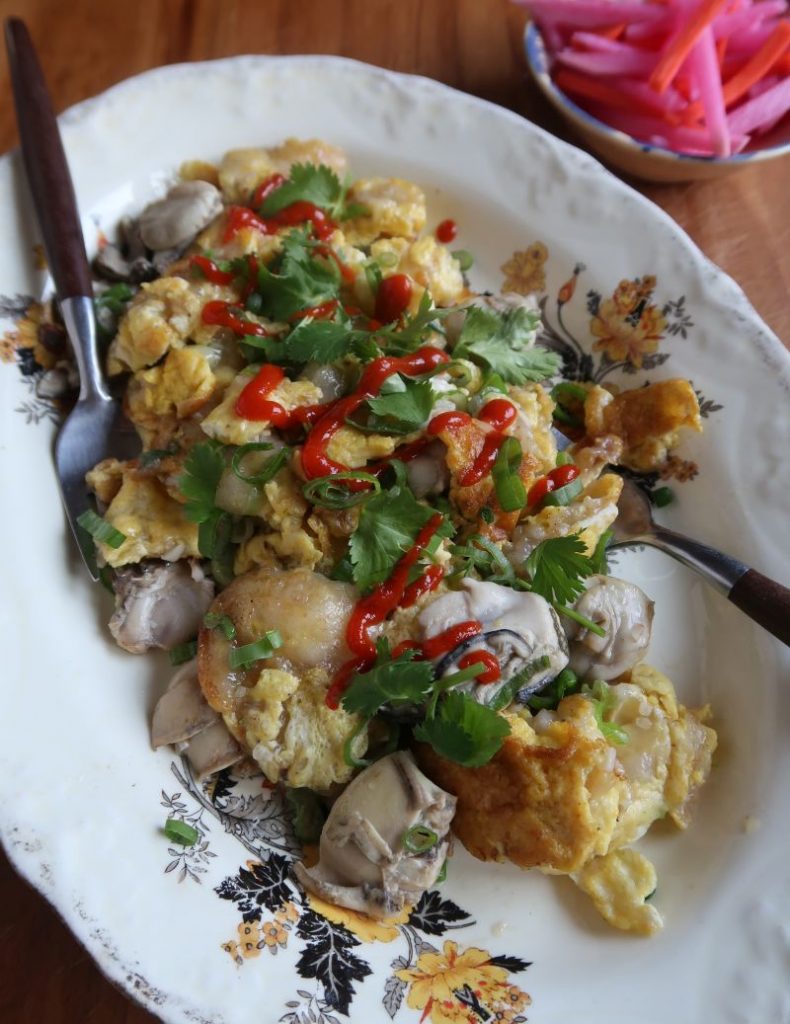
Deliciously perplexing snacks abound in Asia, and oyster omelets are one of them. I had my first at a Taiwanese restaurant in California years ago and it was greasy and gooey, as it should be. Tt was interesting but not something I wanted to recreate. That was until I got Jia!, an earnest self-published book by Diana Zheng that’s devoted to the foods of her Teochew heritage. Her recipe for Teochew oyster omelet was easy going. In fact, it’s a popular late-night street food you can make it at home from regular supermarket ingredients!
The other thing that caught me eye about the recipe was the smart use of fish sauce. Eggs and fish sauce are a magical combination because the condiment turns the eggs into a briny seafood-like ingredient -- like an extender of sorts. Diana’s Teochew oyster omelet also had a modest amount of starch, which signaled to me that it would be less gooey than the Taiwanese version. So I gave Diana’s recipe a whirl.
What is Teochew?
Teochew is the name of a city on the southern coast of Mainland China. It’s sort of across the way from Taiwan. The city’s name in Mandarin is Chaozhou, and in Cantonese, it’s known as Chiuchow. In Vietnamese, it’s Trieu Chau. Teochew’s nearby sister city is Swatow (Shantou in Mandarin; Santow in Cantonese; I don’t know the name in Vietnamese). The people from those two cities call themselves Teoswa, a combo of the two city names (Chaoshan and Chiusan, respectively, in Mandarin and Cantonese).
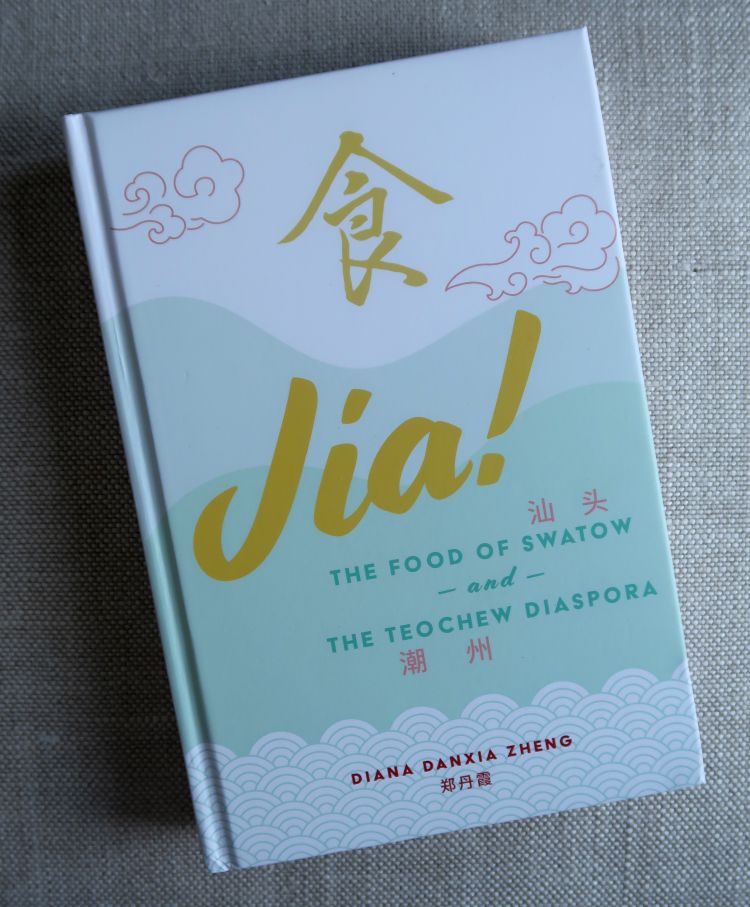
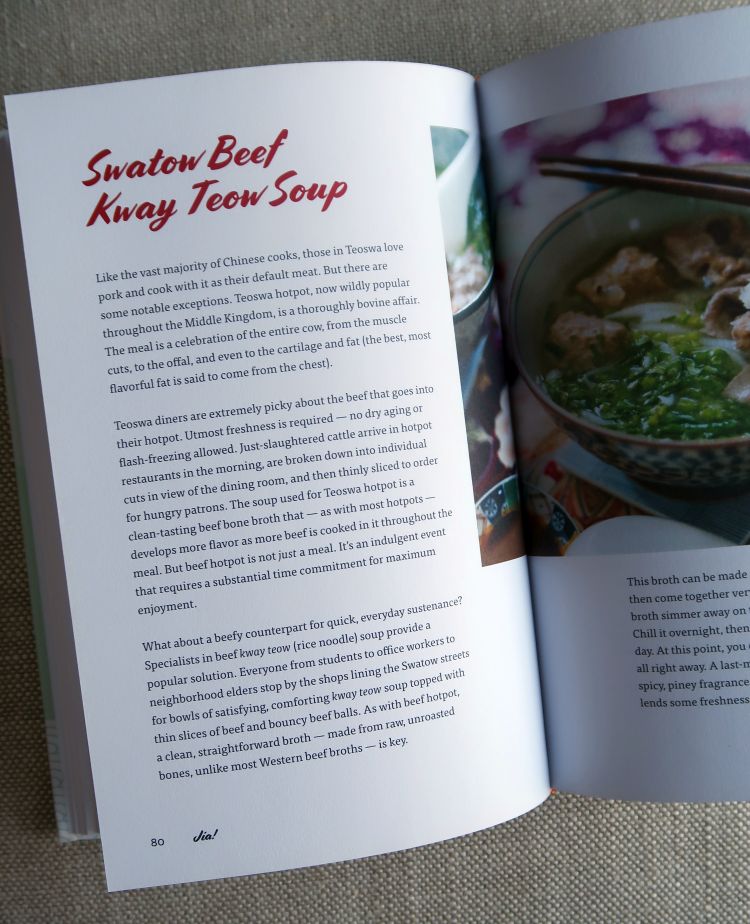
Most English speakers who are into Chinese cuisines know Teochew as Chiuchow (or Chiu Chow, if you separately denote each character). In the Jia! cookbook, Diana proudly uses Teochew as a nod to her culture.
Confusing terms aside, the Teochew are important to Southeast Asian food. In Vietnam, dishes like hu tieu noodle soup have Trieu Chau roots. The Teochew people got around because they’re nomadic seafarers. Over the centuries, Diana writes, they’ve heavily influenced the food in Bangkok, for example. I've been to Chiu Chow restaurants in Singapore and enjoyed steamed fish made with salted plum. In Southern California, the famous lobster at Newport Seafood has Teochew origins!
If you have Netflix, watch the Flavorful Origins series on Chaoshan (the producers used Mandarin since that’s the common language of China).
The Chinese to English translation is awkward at times, but you learn a lot from the short segments. I’m interested in the one about fish sauce!
A Starchy Omelet
Because the Teochew diaspora is so vast, their food reflects their location.
For example, the Thais enjoy a crispy, greasier version of oyster omelet. Diana’s Teochew oyster omelet is based on what her father makes. It's like a cross between a gentle scramble and a broken-up crepe. It has eggs but also an unusual starch and rice batter, which goes down first to create a soft, slightly viscous foundation. To a certain extent, the omelet’s viscosity and briny egginess echo the texture of the oysters. It’s remarkably clever.
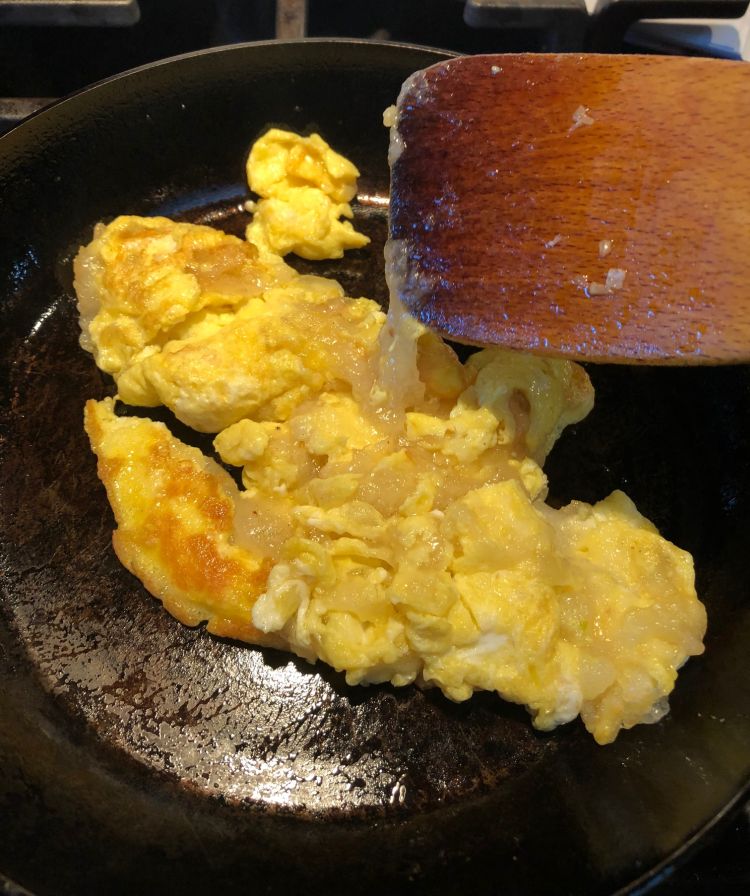
Sweet potato starch is traditionally used for an extra gooey result, but I wanted to use regular supermarket ingredients. Tapioca starch (made from yucca/cassava) is less gooey and Bob’s Red Mill makes fine stuff. Bob’s is sold at many grocers and natural food markets.
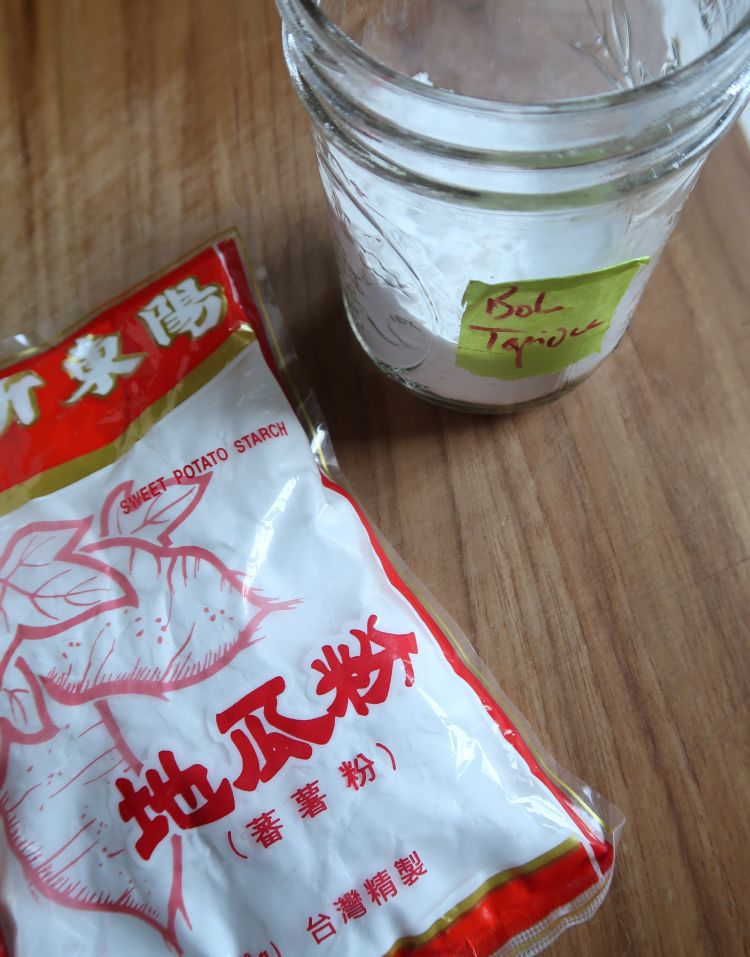
For the rice flour, I tried Thai made Erawan (sold at Asian markets) and Bob’s Red Mill white rice flour. Side-by-side, I liked the omelet made with tapioca and Bob’s rice flour better because the result was firm-ish and a bit easier to cook. With the Chinese sweet potato flour and Thai rice flour, the omelet was a bit lighter, gooey, and fluffier. Texture in Asian food is unusual and I did these experiments to show how you can dial things in to meet your preferences.
I tried canola oil as well as lard, and of course, the lard was lovely. But if you want to be pescatarian, stick with a neutral vegetable-based oil.
Small but Big Oysters
I was not about to shuck oysters for Teochew oyster omelet. I bought jarred ones. Despite being labeled “small”, they were about 3-inches wide. I cut them into smaller chunks. Check the seafood section of your local market. Look at the best by date to make sure they’re fresh.
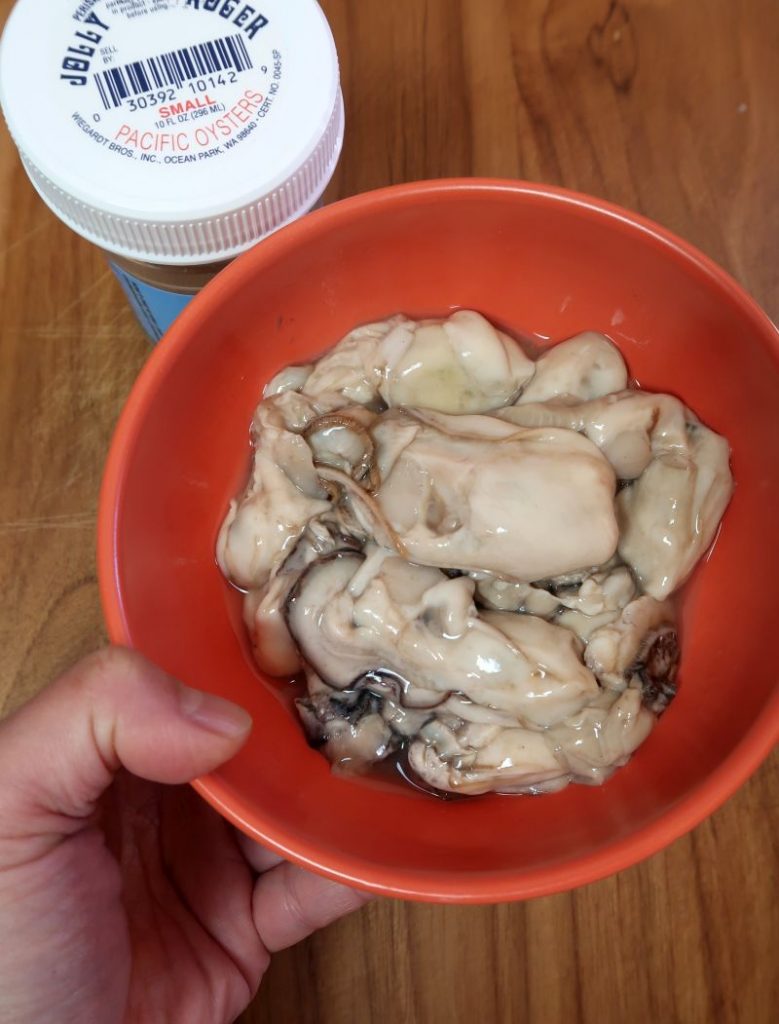
Once drained, a jar like this one had about 8 ounces of oysters, so you can make a double batch. Or make one batch and chill the balance for another round a day or two later.
Shucked mussels work well too, Diana points out in the recipe headnote.
Quirky Cooking Process
Making Teochew oyster omelet is a little unusual, so be prepared for an initial bubbly whiteness, followed by an egg layer, then the mixture is broken up. I flipped mine over to sear the rawish side. Finally the aromatics and oysters are added in. You have to move fast, like a street vendor so prep and line up your ingredients. I prompt you in the recipe below.
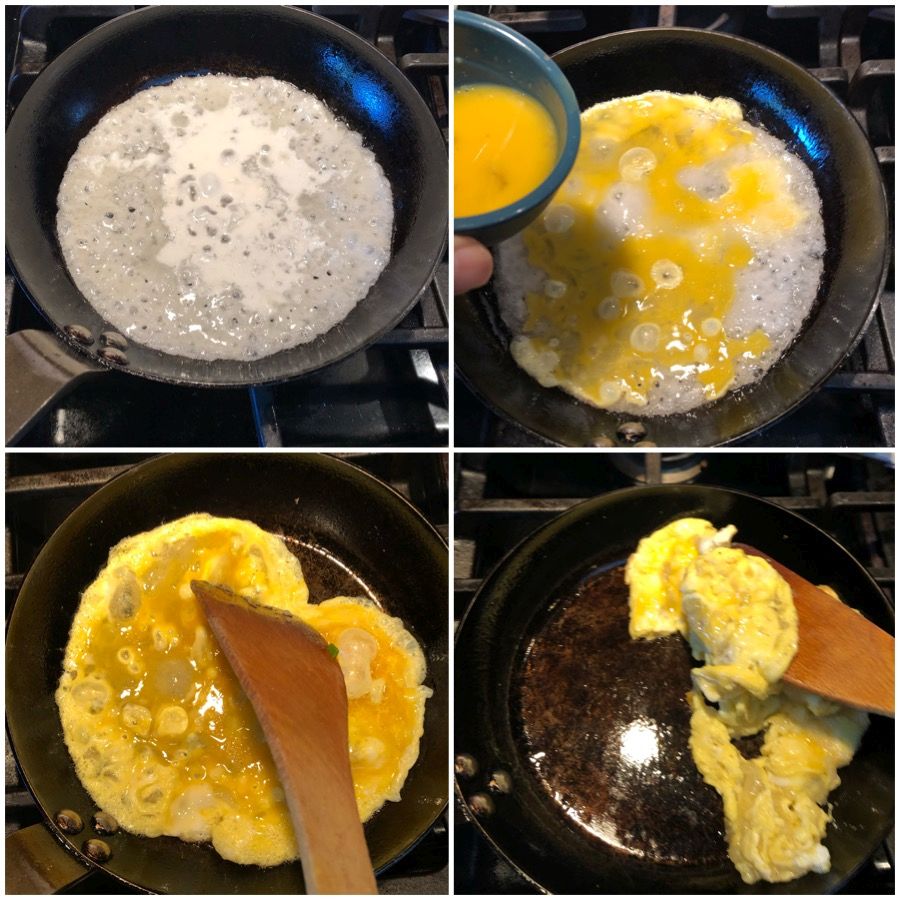
First time out, use a small skillet to practice. Or, if you just want to go for it, use a medium or large skillet. My carbon-steel skillet was perfect because it heated up well. A nonstick skillet or a wok are other options too.
Regardless, Teochew oyster omelet something fun to cook up. We had ours with Viet daikon and radish pickles (do chua) plus champagne. The omelet is a welcoming gateway into the foods of an overlooked group of people who’ve influenced a lot of Southeast Asia and southern Chinese cooking.
Related recipes
- Oyster Spring Rolls
- Fried Eggplant Banh Mi -- Strangely, this vegetarian sandwich is oyster-ish

Teochew Oyster Omelet
Ingredients
Starch batter
- 2 tablespoons tapioca or sweet potato starch
- 1 tablespoon rice flour Thai-made or Bob’s Red Mill
- 1 pinch white pepper
- ½ teaspoon fish sauce
- ½ cup warm water
Egg mixture
- 2 eggs
- 1 teaspoon Shaoxing rice wine or dry fino sherry
- ½ teaspoon fish sauce
- 1 pinch white pepper
Remaining ingredients
- 1 green onion, thinly sliced, white parts separated from green parts
- 2 garlic cloves minced
- 4 ounces small raw oysters drained (a little residual liquid is fine)
- 3 tablespoons oil lard, or chicken fat, divided
- 3 or 4 sprigs cilantro coarsely chopped
- Sriracha optional but encouraged
Instructions
- For the starch batter, in a measuring cup, whisk together the starch, rice flour, white pepper, fish sauce, and water. Set near the stove.
- In a separate measuring cup or bowl, beat together the eggs with the rice wine, fish sauce and white pepper. Keep near the starch batter.
- Put the green onion white parts and garlic in a small bowl so you can quickly dump them into the pan; place near the batter and egg. Set the remaining green onion parts aside for finishing the dish.
- As needed, cut the oysters into 1-inch chunks (think a big cherry). Keep in a bowl and set by the line-up of ingredients along with the green onion and garlic.
- (If this is your first time making oyster omelets, consider making 2 batches in a small (8-inch) skillet so you can practice. Otherwise, go for the single batch!) Over medium heat, warm 1 tablespoons of oil in a medium (10-inch) well-seasoned carbon steel skillet or non-stick skillet. Whisk the starch batter and pour into the skillet. Swirl to cover the entire bottom and maybe go up the sides. Let the mixture bubble and cook for about 1 minute to set. It will look glossy and gelatinous.
- Raise the heat to high, pour 1 tablespoon of oil around the edge of the starch circle. Pour the egg mixture into the pan. Like with making a regular omelet, use a spatula to pull back the pan contents to allow egg to flow into the pan and cook. As the egg sets, use the spatula to cut the egg-and-starch mixture into pieces and flip them over to brown both sides. Total cooking time for this phase is about 1 minute.
- Push the yellow pieces to one side of the pan. Lower the heat to medium-high or medium, add the remaining 1 tablespoon of oil, and then dump in the green onion and garlic. Stir and let cook for 5 to 10 seconds to aromatize. Then add the oysters, stir-fry quickly to combine all the ingredients. When the oysters are just cooked through, as little as 10 seconds(!), turn off the heat.
- Stir in half of the remaining green onion parts, then transfer to a plate. Garnish with the remaining green onion and cilantro. Serve with Sriracha and invite diners to sauce things up.


















Darryl says
Hi Andrea, I'm Darryl, an Asian food fanatic from Australia. Years ago my local Chinese restaurant made the most adorable oyster omelettes, but sadly, no more. As I recall, it was more an egg full young with oysters. Your post has inspired me to give your recipe a go. It looks delicious, thanks for the post, I'll be making it this week!
Andrea Nguyen says
I bet it was inspired by something like this!!! Go for it. Thanks for trying the recipe.
Twinkle says
This looks so good! I love oysters & eggs but have never ordered this when dining out because I feel like most places skimp on the oysters and the texture isn't to my preference (maybe the sweet potato flour gooey-ness you mentioned above) . Can you use cassava flour interchangeably with tapioca starch?
Andrea Nguyen says
The cassava flour sold at natural food stores is different than the starch. I would not use these two products from Bob's Red Mill interchangeably:
https://www.bobsredmill.com/cassava-flour.html
https://www.bobsredmill.com/tapioca-flour.html
In some parts of the world, flour and starch mean the same thing.
Tiffany Cheng says
Nice post, I love Chaozhou/Teochew food too, Oyster Omelette is one of my most favourite Chaozhou/Teochew food dishes.
Andrea Nguyen says
It's a great recipe from a good book! Glad you're here and hope you'll make it.